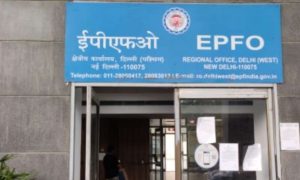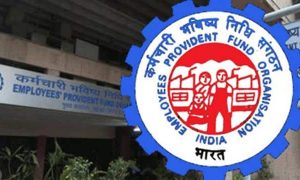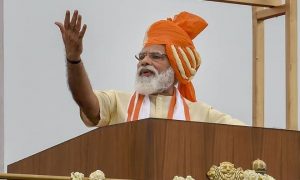Recent registrations cited as proof of job creation were mostly formalisation of existing jobs
By Santosh Mehrotra & Kingshuk Sarkar
Defending the Centre’s record on employment, prime minister Narendra Modi, in a speech in Rajya Sabha, talked about the impressive net enrolment to Employment Provident Fund Organization (EPFO): during 2021, 1.20 crore beneficiaries were enrolled under EPF—about 65 lakh beneficiaries in the 18-25 age bracket, implying they are first-time entrants to the labour market. He connected the net addition to the turnaround in manufacturing, particularly via MSMEs.
Many have used EPFO registration as a proxy for employment generation, even though unemployment had reached its highest rate during the tenure of the present regime, with falling employment rate (share of working age population with work), in the 45 years to 2019. Both rates have worsened since then. Manufacturing employment fell in the last 4 years from 51 to 27 million, halving despite ‘Make in India’.
Net EPFO enrolment does not signify generation of new employment. In most cases, these are contract workers who got registered under EPFO. This can, at best, be termed as formalisation within the organised sector. Contract and casual labour comprise relatively younger workers. These are surplus workers from the primary sector who end up as contract labour in urban and semi-urban areas.
Total EPFO registration is 64.7 million. Total labour force is 501 million, and EPFO registration is about 12% of the total, with 7% being formal and 5% being contract workers attached to the formal sector. A small part of the 88% informal workforce got registered under EPFO last year. This does not necessarily imply new job creation. No one doubts that some organised sector jobs are increasing. However, NSO PLFS (2020) is showing that the share of organised employment is still falling—this means more workers are joining the informal workforce. India’s labour force participation rate has been around 40% (and falling), when globally it is 61%.
Read more:EPFO considering investing PF monies in private corporate bonds
Moreover, CMIE estimates have shown that India lost 15 lakh formal jobs in the organised sector during August 2021. Besides, 10.5 million salaried workers and entrepreneurs lost their jobs between 2019 and December 2021 (CMIE). This contradicts the EPF net additions figures. The question is how to make sense of this contradiction.
Net additions of EPFO registration certainly confirm formalisation, but not job creation. The formalisation can perhaps be explained by a 2020 Supreme Court verdict.
In M/S. Pawan Hans Limited and Others. v. Aviation Karmachari Sanghatana and Others, the SC clarified that contractual employees, who draw wages/salary directly or indirectly, are entitled to provident fund.
Subsequently, EPFO issued an advisory on February 1, 2021, to principal employers (PE) and contractors. This advisory laid out the procedure of registration as PE (owners of enterprises where contract workers actually work) and set up a compliance dashboard for guidance of PE and contractor establishments. PE can now ensure their contractors enrol all contract workers and remit EPF contributions.
Following this, EPFO also initiated a sustained awareness campaign among employers and contractors for enrolment of contract workers as beneficiaries. Net additions of EPFO registrations in subsequent months can be attributed to contractor workers getting registered under EPFO. There has been growing informalisation of the formal sector labour force over the last three decades through use of contract labour and casualisation. They were outside provident fund coverage as only regular employees were covered. Following the Supreme Court verdict and initiatives by the EPFO, a sizeable number of such contract workers in the formal sector (where the EPF Act is already applicable) got newly registered. This showed up as net additions in EPFO statistics.
State-wise analysis of EPFO figures highlights that the establishments covered in Maharashtra, Haryana, Gujarat, Tamil Nadu and Karnataka lead, by adding 9.2 lakh subscribers in July 2021 (or 62.6% of total net payroll addition). These states have bulk of the establishments in organised manufacturing that were already registered under EPFO. Their regular employees were already covered, but following the SC verdict, their contract employees are now getting registered.
Read more:EPFO: How to transfer EPF online – Step by step guide
However, there has been a reliability issue even with EPFO net enrolment registrations that are taken as an indicator of increase in formal employment. Massive downward revisions in net subscribers renders EPFO monthly payroll unreliable. A big limitation of EPFO-based payroll data is the absence of data on unique existing subscribers (or contributors). Even after termination of job, an employee can wait long before filing for settlement. The employer stops paying his/her EPFO contribution on termination. The EPFO data (on the exit) will be updated as and when a claim is filed. This is the primary reason for large and continuous revisions. Therefore, new subscribers’ data must be analysed in conjunction with the number of existing subscribers who are contributing. In the absence of the number of existing contributors, the monthly payroll data is unuseable. The extent of revisions is very large. Upon comparison of EPFO-projected figures and actual figures for all months in FY20 and FY21, the downward revisions amounted to 35% and 20%, respectively. The net-new-subscriber figures were revised down by 39% in April 2021, 42% in May, 28% in June, 21% in July, 17% in August, and 9% in September 2021. There is a need to stop presenting data to draw conclusions that the data does not permit.





































